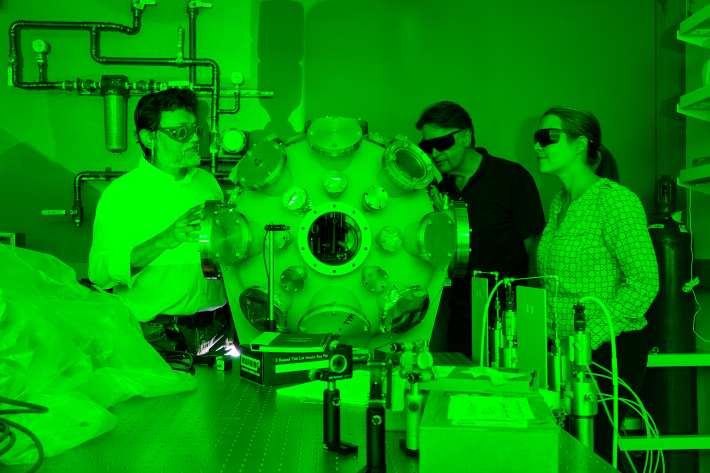Low Earth orbit (LEO), which consists of altitudes up to 1,200 miles above Earth, is the focus of a rapidly growing commercial space economy and is key for telecommunications, navigation, military operations, scientific research and human spaceflight.
Technology advances and plummeting costs have led to the region becoming increasingly crowded with spacecraft like telescopes, space stations and thousands—and counting—of satellites.
As their number grows, it becomes more and more critical to develop spacecraft materials that can withstand LEO’s challenging conditions for as long as possible. These include exposure to atomic oxygen, charged-particle radiation, impacts from micrometeoroids and orbital debris, fluctuations in temperature and thermal cycling, as well as UV radiation.
The Air Force Research Laboratory (AFRL) and Air Force Office of Scientific Research (AFOSR) recently awarded The Ohio State University $5.5 million to create a new Center of Excellence to advance spacecraft materials design.
Led by Materials Science and Engineering Professor Wolfgang Windl, the Science, Performance and Critical Evaluation of Materials in Low Earth Orbit (SPACE-Mat) Center of Excellence aims to predict and extend the useful life of spacecraft materials through physical and data-driven modeling, and to train a new generation of materials engineers.
“The SPACE-Mat Center of Excellence leverages Ohio State’s pioneering expertise in radiation damage research, its unique irradiation and characterization facilities, and its strong record of graduate student training,” explained Windl, who will serve as director of the center.
The new center will establish protocols for reliably identifying the lifetime-limiting environmental effects in LEO, setting up Earth-bound test facilities that replicate those environmental effects, and developing experiments to assess radiation damage and resulting performance changes.
The multidisciplinary team includes experts from Georgia Institute of Technology, Michigan State University and the University of Alabama in Huntsville.
“No existing academic discipline covers the necessary education and research training of graduate students in the combination of space environment science, radiation effects on materials and properties, multiscale and data-driven modeling, and uncertainty in combined experimental, modeling and simulation protocols,” Windl said. “Our team has the expertise to develop a spacecraft materials design workforce for AFRL who are trained in the interdisciplinary space between materials science, space physics and computational modeling.”
SPACE-Mat will educate future engineers to understand how space materials will be assessed and developed in the digital age. Students will also be trained in developing computational approaches for mechanistic modeling of the radiation-induced changes to materials’ structure and properties, data-driven methods to predict the lifetime of materials and improve their design, and in experimentally generating the data necessary to train and validate these models.
“Student trainees will gain hands-on experience in the world-class facilities at the partner universities and AFRL,” said Windl, the principal investigator for the project. “Mentorship is also a key component of our program, and each student will be advised by faculty and AFRL scientists and engineers.”
Chemical and Biomolecular Engineering Professor Lisa Hall will serve as co-director and co-principal investigator (co-PI) of SPACE-Mat. Fellow Ohio State co-PIs include Materials and Science Engineering Professor David McComb and Assistant Professor Enam Chowdhury, and Electrical and Computer Engineering Research Associate Professor Aaron Arehart.Georgia Institute of Technology Professor Rampi Ramprasad, Michigan State University Professor John Albrecht and University of Alabama in Huntsville Professor Gary Zank are also co-investigators.
Written by Candi Clevenger, College of Engineering Communications, clevenger.87@osu.edu
